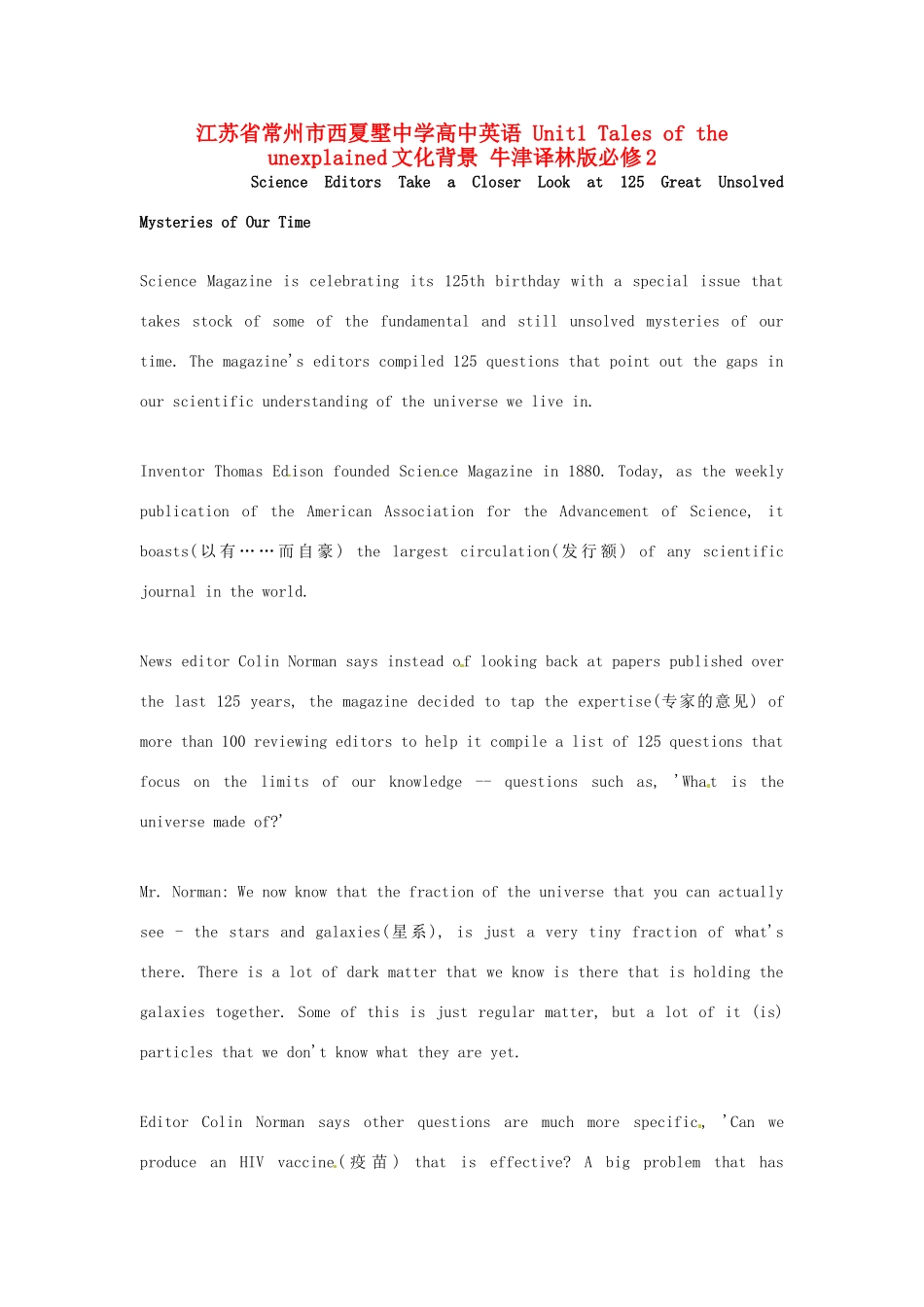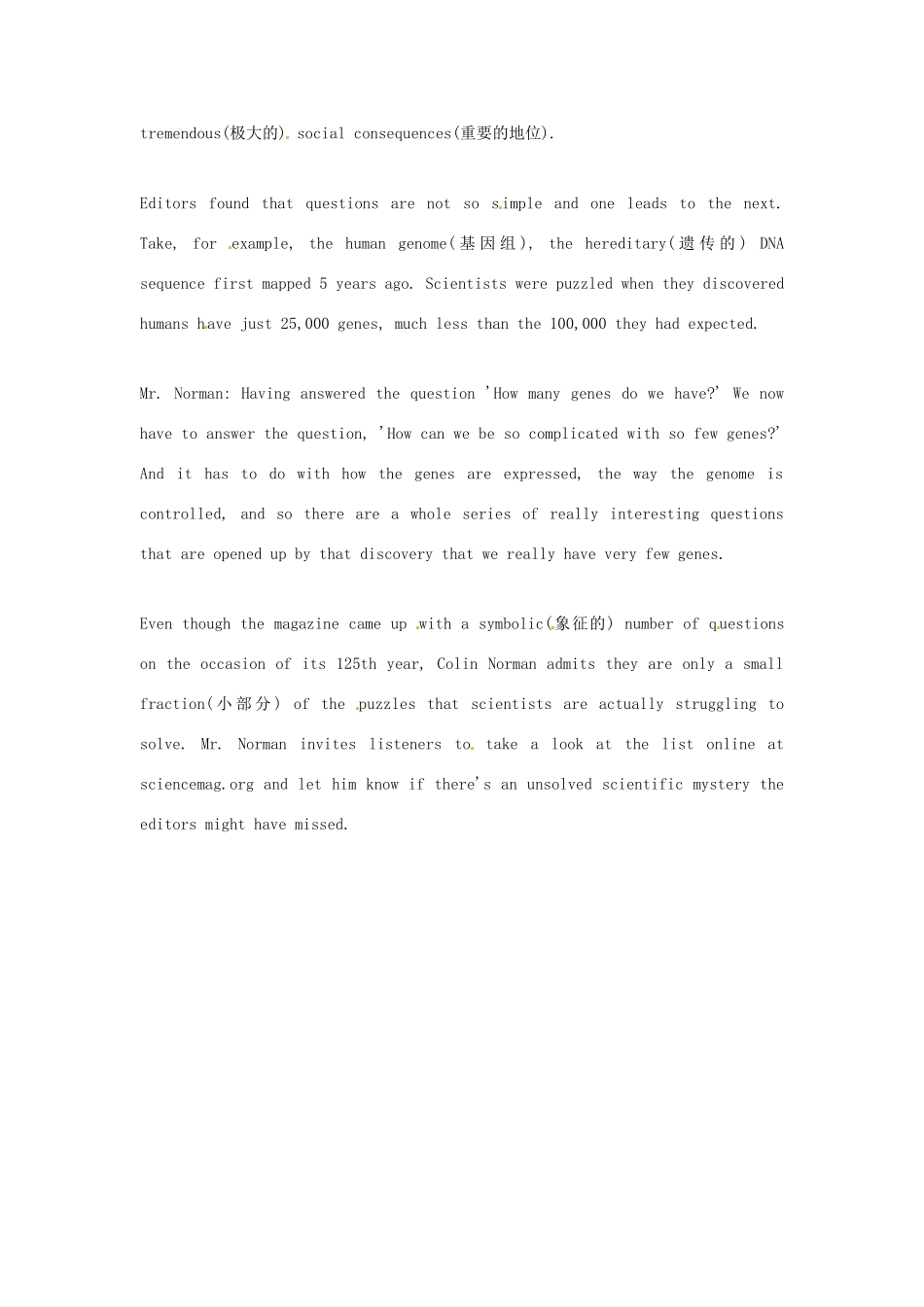江苏省常州市西夏墅中学高中英语 Unit1 Tales of the unexplained 文化背景 牛津译林版必修 2Science Editors Take a Closer Look at 125 Great Unsolved Mysteries of Our TimeScience Magazine is celebrating its 125th birthday with a special issue that takes stock of some of the fundamental and still unsolved mysteries of our time. The magazine's editors compiled 125 questions that point out the gaps in our scientific understanding of the universe we live in. Inventor Thomas Edison founded Science Magazine in 1880. Today, as the weekly publication of the American Association for the Advancement of Science, it boasts( 以 有 … … 而 自 豪 ) the largest circulation( 发 行 额 ) of any scientific journal in the world. News editor Colin Norman says instead o f looking back at papers published over the last 125 years, the magazine decided to tap the expertise(专家的意见) of more than 100 reviewing editors to help it compile a list of 125 questions that focus on the limits of our knowledge -- questions such as, 'Wha t is the universe made of?' Mr. Norman: We now know that the fraction of the universe that you can actually see - the stars and galaxies( 星 系 ), is just a very tiny fraction of what's there. There is a lot of dark matter that we know is there that is holding the galaxies together. Some of this is just regular matter, but a lot of it (is) particles that we don't know what they are yet.Editor Colin Norman says other questions are much more specific , 'Can we produce an HIV vaccine( 疫 苗 ) that is effective? A big problem that has tremendous(极大的) social consequences(重要的地位).Editors found that questions are not so s imple and one leads to the next. Take, for example, the human genome( 基 因 组 ), the hereditary( 遗 传 的 ) DNA sequence first mapped 5 years ago. Scientists were puzzled when they discovered humans have just 25,000 genes, much less than the 100,000 they had expected. Mr. Norman: Having answered the question 'How many genes do we have?' We now have to answer the question, 'How can we be so complicated with so few genes?' And it has to do with how the genes are expressed, the way the genome is controlled, and so there are a whole series of really interesting questions that are opened up by that discovery that we really have very few genes.Even though the magazine came up with a symbolic(象征的) number of questions on the occasion of its 125th year, Colin Norman admits they are only a small fraction( 小 部 分 ) of the puzzles that scientists are actually struggling to solve. Mr. Norman invites listeners to take a look at the list online at sciencemag.org and let him know if there's an unsolved scientific mystery the editors might have missed.

